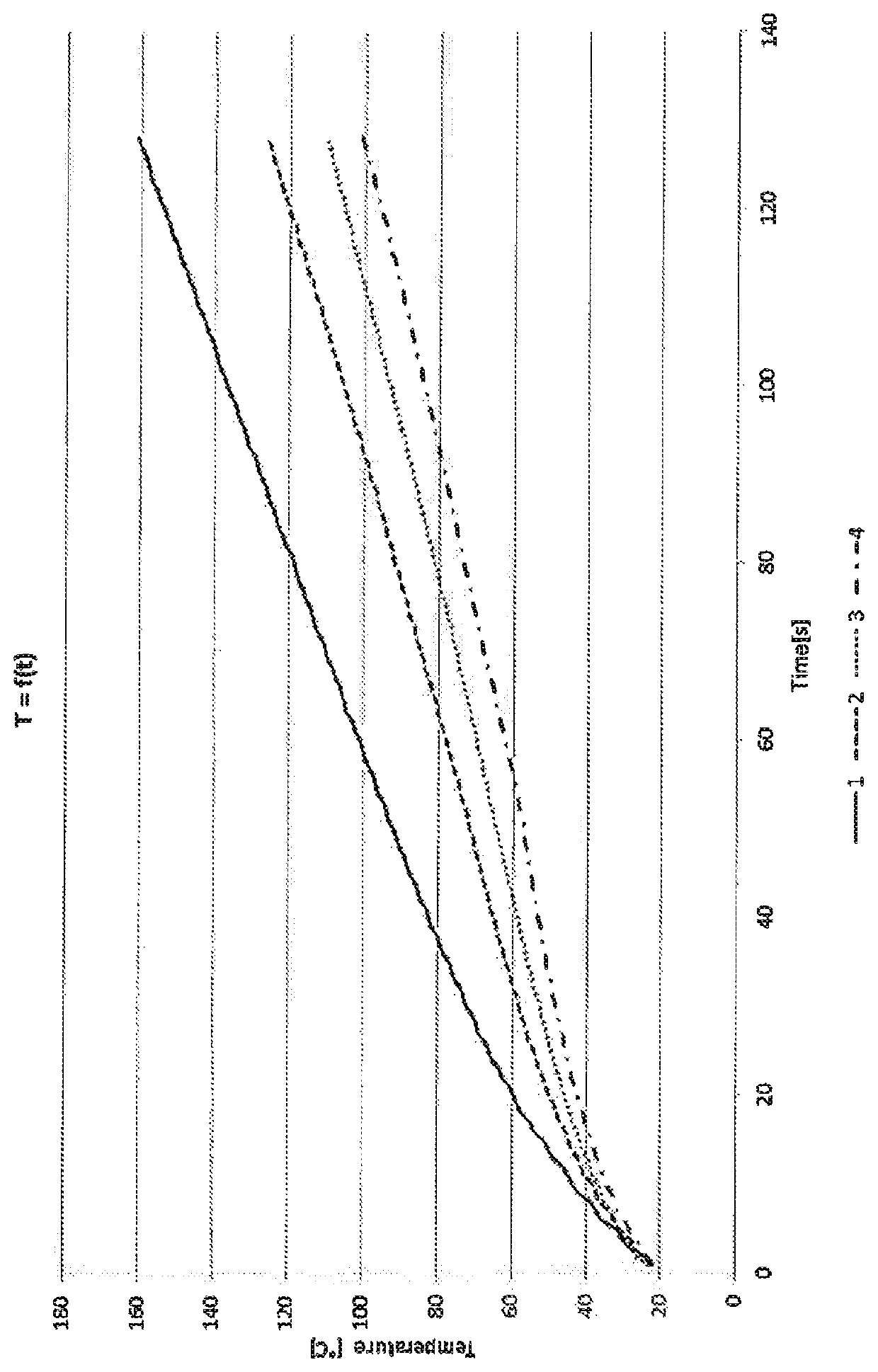Electric winding body with optimised performance characteristics and improved protection against overheating
a technology of winding body and electric winding, which is applied in the direction of winding insulation material, plastic/resin/waxes insulators, chemistry apparatus and processes, etc., can solve the problems of material overload, material brittleness, material inability to compensate or absorb this overload, etc., to reduce the occurrence of hot spots, improve the total thermal capacity, and reduce the use of materials. small
- Summary
- Abstract
- Description
- Claims
- Application Information
AI Technical Summary
Benefits of technology
Problems solved by technology
Method used
Image
Examples
example 1
without Filling
[0021]Using a commercial winding form with copper windings, diameter of copper wire 0.5 mm, length 15 m, without integrated filling, by the test method specified above, the temperature-dependent change in resistance is measured and the temperature is calculated. The result of the measurement is shown in FIGURE 1, curve 1 (no filling). This curve serves for comparative purposes.
example 2
with PE
[0022]A free-flowing PE from LyondellBasell (LUPOLEN® 1800S) is integrated into the coil according to example 1, the weight of which has been determined beforehand, by the method of dipping or spraying. For this purpose, the coil, prior to the filling, is heated to a temperature of 120° C. and, after the filling, kept in a heated chamber at 140° C. for 30 min, and then cooled down to room temperature. As a result, the copper windings and all cavities in the windings are covered with the PE in a form-fitting manner. By measuring the weight of the coil after the dipping or spraying, the amount of PE that has penetrated into the windings of the coil is determined. The mass is 4 g. Then the change in temperature is determined by the method described above. The result of the measurement is shown in FIGURE 1, curve 2 (with PE).
example 3
with PE and Graphite
[0023]A PE from LyondellBasell (LUPOLEN® 1800S) is filled with 20% graphite (SC20O, from Kropfmühl). The free-flowing PE is integrated into the coil according to example 1, the weight of which has been determined beforehand, by the method of dipping or spraying and heat treatment according to example 2. By measuring the weight of the coil after the dipping or spraying, the amount of PE that has penetrated into the windings of the coil is determined. The mass is 4 g. Then the change in temperature is measured by the method described above. The result of the measurement is shown in FIGURE 1, curve 3 (PE+graphite).
PUM
| Property | Measurement | Unit |
|---|---|---|
| melt flow index | aaaaa | aaaaa |
| temperature | aaaaa | aaaaa |
| temperature | aaaaa | aaaaa |
Abstract
Description
Claims
Application Information
 Login to View More
Login to View More - R&D
- Intellectual Property
- Life Sciences
- Materials
- Tech Scout
- Unparalleled Data Quality
- Higher Quality Content
- 60% Fewer Hallucinations
Browse by: Latest US Patents, China's latest patents, Technical Efficacy Thesaurus, Application Domain, Technology Topic, Popular Technical Reports.
© 2025 PatSnap. All rights reserved.Legal|Privacy policy|Modern Slavery Act Transparency Statement|Sitemap|About US| Contact US: help@patsnap.com

